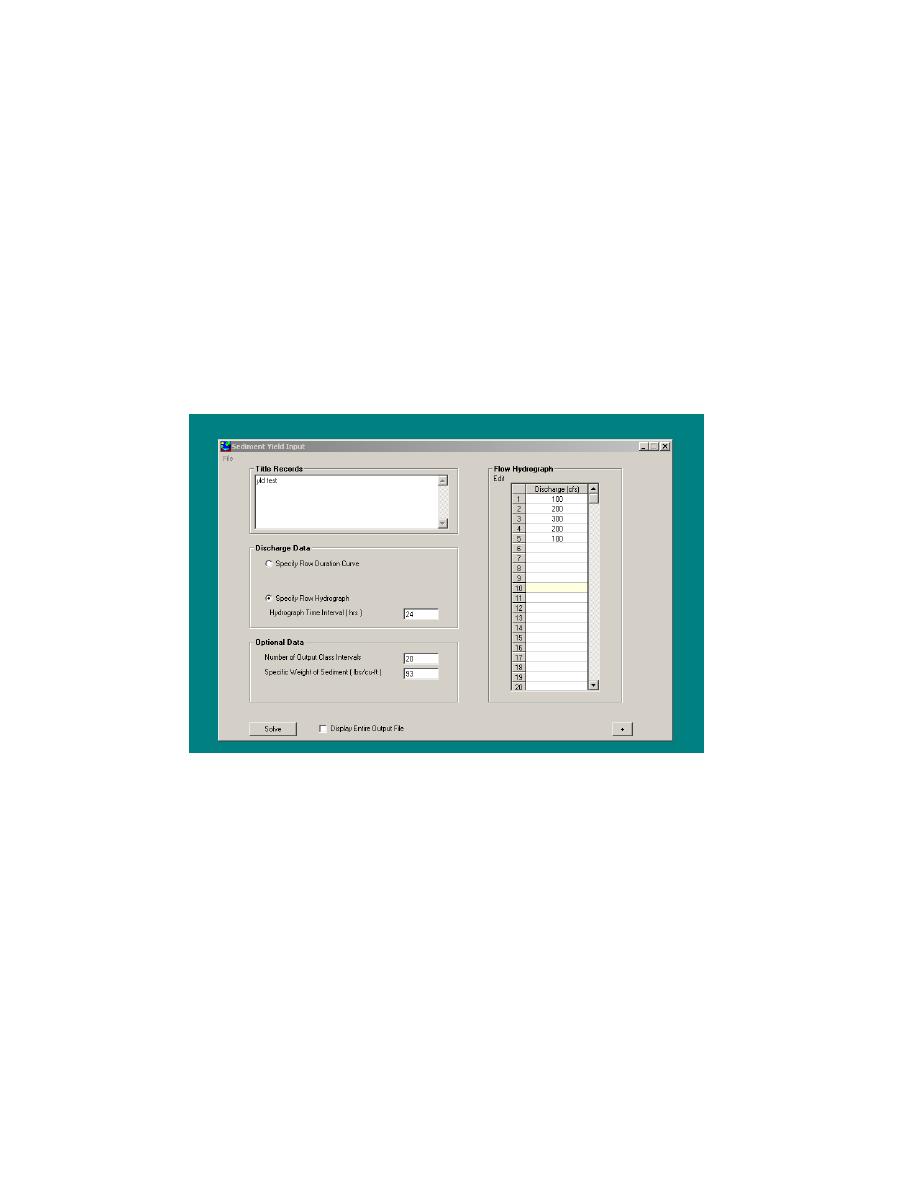
On the SAMwin main menu, clicking Edit/Sediment Yield Input brings up the
screen in Figure 8-2. If there is an appropriate input file, a *.yi file, in the project
directory, it's data will appear on the screen.
SAM.yld is designed to most easily run the data set made by SAM.sed, the
*.yi file. SAM.sed writes the sediment concentration rating curve to a SAM.yld
input file. If more than one sediment transport function was selected in
SAM.sed, the SAM.yld input file will contain all sediment concentration rating
curves, separated by a $JOB record. The flow duration curve or hydrograph,
whichever is used, is not written into the *.yi file. This information can be added
to a SAM.yld data set on the SAMwin Sediment Yield Input screen shown,
Figure 8-2. Both the *.yi input file and the flow data file can be prepared with a
system editor and read into the screen in Figure 8-2 using the File dropdown
menu. The flow data file MUST be named CDFFIL and reside in the project
directory.
Figure 8-2. The Sediment Yield Input screen.
Title Records. This area allows the user to input descriptive strings, up to 78
characters long, for use in identifying data sets. These title records are written to
the flow data file so should be used to describe the flow data, but the input is
optional.
Discharge Data. The flow data may be input as a flow duration curve, the
option shown in Figure 8.3, or as a flow hydrograph, Figure 8.4. Both options
require the time interval to be input. Both the right hand side of the screen and
the "Optional Data" area of the screen will request different data depending on
the option selected here.
133
Chapter 8
Input Requirements and Program Output for SAM.yld



 Previous Page
Previous Page
